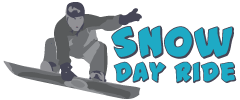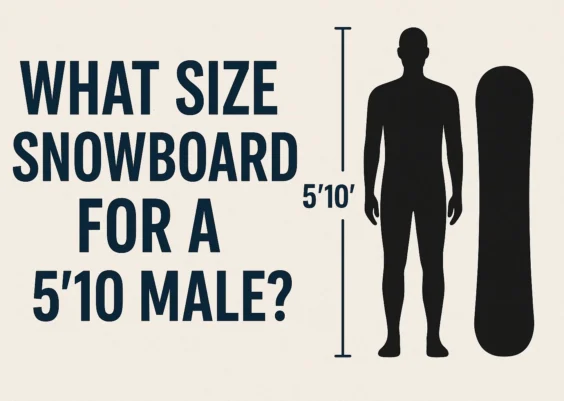Key Points
- Find out if you ride regular or goofy with a simple push test.
- Measure your stance width using your shinbone or a power stance guide.
- Choose binding angles based on your riding style and keep experimenting.
- Use a #3 Phillips screwdriver and follow the correct steps for disc or channel bindings.
Every snowboard tells a story, and the way you mount your bindings shapes that story. Bindings connect your body to the board and transfer your movements to the snow. This practical guide teaches how to mount bindings with care. We cover stance, width, angles and hardware.
This knowledge will let you know how to mount bindings on a snowboard.
Find Your Lead Foot
- Regular vs. goofy: Before touching a screw, determine which foot naturally leads. REI advises standing still and letting yourself fall forward or having a friend give you a gentle push – the foot you use to catch yourself becomes the lead foot. Tactics echoes this idea, describing a “push test” where the foot you instinctively use to regain balance reveals your stance.
- Testing methods: If the push test feels inconclusive, slide across a hardwood floor in socks or imagine running up a flight of stairs – whichever foot goes forward first is your lead foot. Knowing whether you ride regular (left foot forward) or goofy (right foot forward) sets the foundation for all subsequent steps.
Dial In Your Stance Width and Position
| Aspect | Description |
|---|---|
| Reference stance markers | Most snowboards have markings around the insert holes indicating a reference stance. This center-mounted position is ideal for control, especially for beginners or freestyle riders. Advanced riders might shift to a setback stance for better flotation in powder. |
| Measuring width | A comfortable stance balances stability and mobility. REI suggests using the length of your shinbone (from knee to heel) as a rough guide. Tactics advises standing in a power stance and measuring the distance between the centers of your feet. |
| Centered vs. setback placement | Decide whether to position bindings symmetrically (balanced freestyle) or offset them toward the tail for enhanced powder performance. Bindings should never be closer to the nose than the tail. |
Select Your Binding Angles
- Duck stance for beginners: New riders often benefit from a duck stance, where feet angle slightly away from each other. REI recommends positioning the front binding at about +15° and the rear binding between 0° and ‑6°. Evo notes that freestyle riders or those with twin boards often use a negative back foot angle between ‑6° and ‑12° for stability when riding switch.
- Directional or all‑mountain angles: All‑mountain riders choose a slight positive angle on both feet. A common setup is +15° on the front foot and 0° on the back foot for carving and powder. Tactics cautions against exceeding ‑15° on the back foot to avoid knee strain.
- Experimentation: Angles are personal. Evo encourages riders to keep experimenting until they find a combination that feels natural; different boards or disciplines call for different setups.
Gather the Right Tools
- Tools you will need: To mount most bindings you need a #3 Phillips screwdriver and a wrench to fit the bindings to your boots. A compact multi‑tool with Allen keys and flat‑head screwdrivers is useful for on‑hill adjustments.
- Read your binding instructions: Some bindings, especially Burton EST models, come with specific screws and inserts; using incompatible hardware can void warranties or compromise safety.
Mount Disc Bindings (Standard Inserts)

Follow these steps to attach bindings with conventional discs:
- Position the front binding: Place the disc in the binding and align it with the insert holes for your chosen stance width. Each tick mark on the disc represents about 3° of rotation. For regular riders mount the left binding at the front; for goofy riders mount the right binding.
- Center the binding on the board: Position the binding so that an equal amount of board extends beyond the toe and heel of your boot. Use writing on the board to distinguish nose from tail.
- Insert screws loosely: Turn the first screw a few turns without fully tightening. Then insert the remaining screws and continue to tighten gradually, alternating screws to ensure even pressure.
- Adjust and tighten: With a boot in the binding, fine‑tune the position if necessary and then snug the screws by hand. Avoid overtightening; it may strip threads or damage the board.
- Mount the rear binding: Repeat the above steps for the rear binding. Adjust the angle according to your stance, such as a negative angle for a duck stance or zero degrees for all‑mountain.
Mount EST or Channel Bindings
Burton’s Channel system uses sliding inserts instead of fixed inserts. Mounting these bindings involves a slightly different process:
- Install the channel inserts: Remove the plastic channel plugs and slide the provided metal inserts into the channel.
- Attach the bindings loosely: Align the binding over the channel and insert the screws into the outer edges of the binding; do not fully tighten.
- Set stance width and angles: Slide the binding within the channel until you reach your desired width and rotate it to the desired angle. Use the built‑in windows or markings for guidance.
- Shift toe or heel: Before locking down the screws, you can shift the binding slightly toward the toe or heel to centre your boots and prevent drag.
- Adjust toe ramp: Some bindings include a footbed or gas pedal adjustment. On most EST models this is tool free. Slide the ramp forward or backward.
- Lock it down: Tighten each screw evenly with a hand screwdriver. Step into your bindings to check comfort and stability before heading out.
Fine‑Tuning and Adjustments
- High‑back and forward lean: Adjusting the high‑back angle affects your posture and board response. Pushing the high back forward lowers your centre of gravity and gives you more control. This setup limits your mobility. Easing the high back returns mobility and is good for jibbing and park tricks.
- Toe ramp and footbed: Make sure the ramp or footbed matches your boot size. Your toes should line up with the ramp edge for proper leverage.
- Strap adjustment: With boots in the bindings, adjust the ankle and toe straps so they center over your boot and can tighten without discomfort. Proper strap positioning improves board control.
Mounting snowboard bindings mixes science and artistry in equal parts. Pick your stance, measure your width and set your angles with care. Mounting it properly turns the board into a refined tool. Take time to experiment with your setup and adjust as needed. The right setup feels like part of you and lets you ride with confidence and grace.
FAQ
Q: How can I tell if I’m regular or goofy?
A: Stand relaxed and have a friend push you from behind. The foot you step forward to regain balance is your lead foot.
Q: What tools do I need to mount bindings?
A: You need a #3 Phillips screwdriver and a wrench. A compact multi‑tool helps with quick adjustments.
Q: Do I need to adjust my stance for different conditions?
A: Adjust your stance and angles to match your riding style and snow conditions. Try different combinations until the board feels right.
Q: How often should I check my screws?
A: Check the screws before each session. Riding can loosen them over time, and a quick check helps keep your setup secure.




